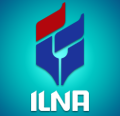Iran’s foreign trade booming during the Rouhani administration

Iran’s trade with Europe stood at €1.5 billion ($1.6 billion) in January 2017, registering a staggering 171% increase year-on-yearLast year’s Iranian exports in the mining sector exceeded $7 billion, with steel companies having exported a record high of 6.6 million tons of steel products
Iran's foreign trade has witnessed a growing trend since President Hassan Rouhani took office in August 2013.
During the Rouhani administration, Iran's non-oil trade balance turned positive for the first time in 62 years, meaning the rate of exports exceeded that of imports, the Persian daily Iran reported.
Iran’s non-oil foreign trade stood at $87 billion in the last Iranian fiscal year (ended March 20, 2017).
The latest data released by the Islamic Republic of Iran Customs Administration show that Iran exported 129.648 million tons of non-oil commodities worth $43.93 billion over the year, registering a 3.58% growth in value of exports compared to the preceding year.
Gas condensate was the main exported commodity, comprising $7.32 billion of the export value. It was followed by light oil, excluding gasoline ($2.49 billion), liquefied natural gases ($2.79 billion), liquefied propane ($1.222 billion) and petroleum gases and liquefied hydrocarbons ($1.204 billion).
Iran imported $43.684 billion worth of goods during the same period, marking a 5.16% growth. Field corn, soybean, cars, auto parts and rice were Iran’s main imports in the last Iranian year.
Iran's trade with Europe stood at €1.5 billion ($1.6 billion) in January 2017, registering a staggering 171% increase year-on-year.
European imports from Iran show a 6.5% rise in that month, compared with last year's corresponding period. Spain imported €115 million ($125.2 million) worth of goods, indicating a 7-fold rise YOY.
France's imports saw a 37-fold increase, reaching €111 million ($120.9 million). Imports from Greece, Italy and the Netherlands saw a 42, 8.5 and 17-fold growth to €106 million ($115.4 million), €257 million ($279.9 million) and €83 million ($90.4 million) respectively.
The total amount of EU exports reached €783 million ($853 million) in January, up 73% compared with the corresponding period of the year before during which EU exported €452 million ($492.4 million) worth of goods to Iran. Germany saw a 31% rise to €203 million ($221.1 million) in exports to Iran. Belgium exported €48 million ($52.2 million) worth of commodities while Spain exported €38 million ($41.4 million) and France €147 million ($160.1 million), respectively indicating a 2, 3 and 3.5-fold growth.
Iran's exports to Africa, more specifically to a group of 30 African countries, experienced a year-on-year increase of 100% in the last Iranian year (March 2016-17), according to the Arab-African States Department of Iran Trade Promotion Organization.
Iran's major exported commodities to Africa include pastry, chocolate, industrial oils, petrochemicals, asphalt and building construction materials.
Last year's Iranian exports in the mining sector exceeded $7 billion, with steel companies having exported a record high of 6.6 million tons of steel products.
Over 57 million tons of mineral products, including steel products, copper, aluminum, cement, lead, zinc, metal and precious rocks, coal and coke, worth over $7 billion were shipped overseas last year, registering a 38% and 17% growth in weight and value respectively, the Iranian Mines and Mining Industries Development and Renovation Organization announced.
Exports in this sector constituted 44% of the total volume and 16% of the total value of Iran's foreign trade during the period.
Some 5.8 million tons of mineral products worth $3.7 million were imported into the country last year, down 26% and 17% in tonnage and value respectively.
END
